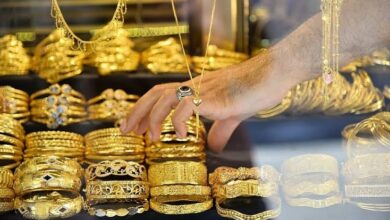A Quick Summary of Antique French Silver and its Hallmarks

-
Author
Mark Nico -
Published
September 10, 2021 -
Word count
763
France, like many European countries, has for centuries had a centrally-controlled system for marking silver items. These ‘hallmarks’ or “poinçons” (roughly “pwahn-son”) in French confirm a number of things about the item.
What follows is a very highly summarized overview for those interested in antiques.
What French silver hallmarks may tell you
France has some of the world’s more complicated hallmarking systems and that hasn’t been helped by numerous changes over time. So, a good detailed guide is required to interpret them, particularly if they’re pre-20th century.
Even so, and generalising greatly, they typically confirm:
• the purity of the silver. France historically recognised three levels: – 950 grade, 800 grade and some marks signify that the item is “at least 800 grade” (e.g. pocket watch casings):
• possibly, for some 19th century items and earlier, where the item was assayed – i.e. tested and approved. This might include marks showing duty payments in various locations;
• who made it.
Dating French silver hallmarks
You can think of French hallmarks falling into a relatively small number of periods in terms of their characteristics:
• Ancien Régime – the royal system that prevailed for centuries prior to the French Revolution, culminating in the execution of Louis XVI;
• Premier Coq – the abandonment of royalist imagery and the adoption of republican images starting in 1798 and lasting until 1809. The coq is literally a cockerel in an oblong cartouche. This mark was used during the historic periods known as the Directoire and First Empire;
• Deuxième Coq – the shape of the cockerel was changed in 1809 and that lasted until 1819. This corresponds to the historical periods First Empire and Restoration of the Monarchy under Louis XVIII;
• Vieillard – the cockerel vanishes and is replaced by what is commonly known as the “old man’s head” but is technically the head of Michelangelo. This lasts from 1819-1838, thereby covering the historical periods of Louis XVIII, Charles X and Louis-Phillipe;
• Minerve – this is perhaps the most commonly encountered hallmark for silver collectors and dealers. The head of Minerva is now in the cartouche and this is stable from 1838 to the present day;
• Tête de Mercure – Mercury’s head was used on some French items made for export during the period 1840-1879 – so the periods Louis-Phillipe, Second Republic, Napoléon III, Second Empire and Third Republic;
• Miscellaneous – Since the 19th century, France has also used a plethora of smaller hallmarks recognising different circumstances. These are usually, though not exclusively, found on smaller and lighter items of silver. They designate things such as imported silver, silver items below a specific weight, items with a specific function (such as pocket watch cases) and so on. Just a sample includes the boar’s head, weevil, swan and quite a few others. These marks sometimes also indicate by implication, that the silver is less than 950 grade;
• 925 – the standard international Sterling mark found since the 1970s on some French silver and now legally accepted.
Identifying Ancien Régime marks
These are usually identifiable at a glance.
Space doesn’t permit a full description but there are some fairly good sources on line. However, look for:
• marks that are much more deeply struck into the silver than on more recent items – that’s particularly true for flatware;
• many (though not all) 18th century marks will have more flowing, organic and irregular boundaries or incorporate circular shapes;
• cartouches containing a single letter;
• royal symbols – notably the crown and/or fleur-de-lys.
Be aware that French 18th century and earlier hallmarks were widely faked in the 19th century in both Holland and Germany on some of their silver pieces. These aren’t easy to detect unless you’re an expert and the items may be silver. Check with an expert if you’d like to be sure.
Purity of silver
If all other things are equal, 950 grade silver will usually be more expensive and valuable than 800 grade.
After 1798, it’s usually easy to tell the purity of larger French silver items:
• if you look in the corner of the main cartouche, irrespective of what head it contains, you should see a tiny “1” or a “2”. As you might expect, the “1” equates to 950 and “2” to 800;
• if you’re struggling to read the number, which can happen, look at the corners of the cartouche. 800 grade silver uses rounded edges whereas the corners of 950 grade silver are canted (meaning in this context, clipped at an angle of 45 degrees).
Summary
This article has barely scratched the surface of a complex subject.
If you’d like to know more, there are some lengthier reading guides available onli
This article has been viewed 1,349 times.
Source link




